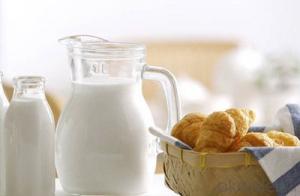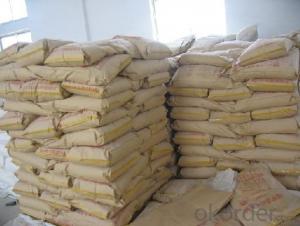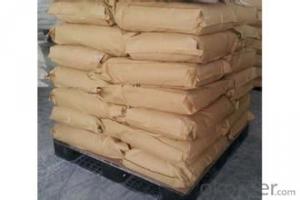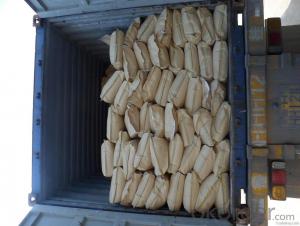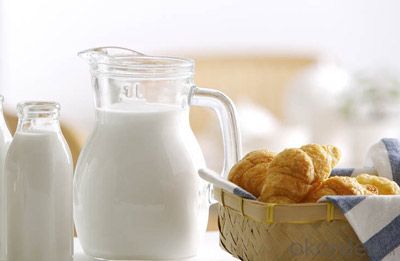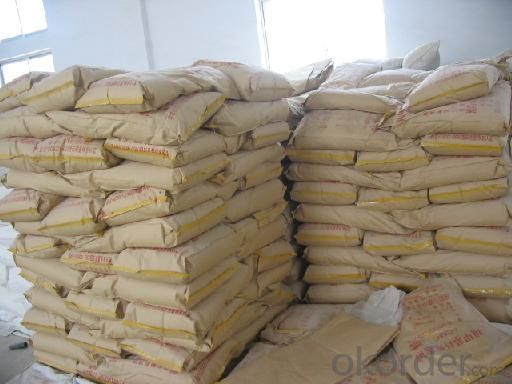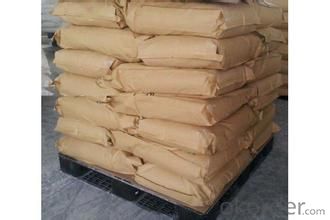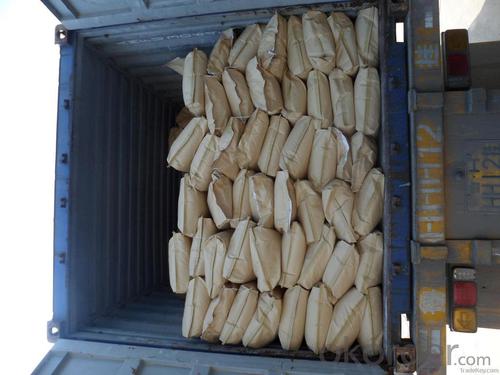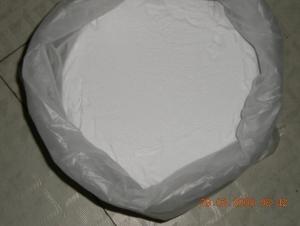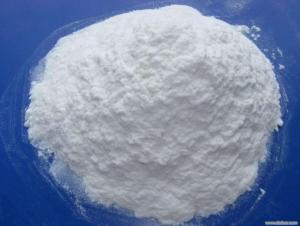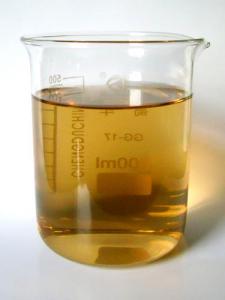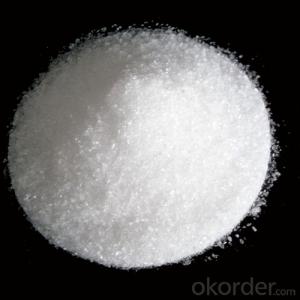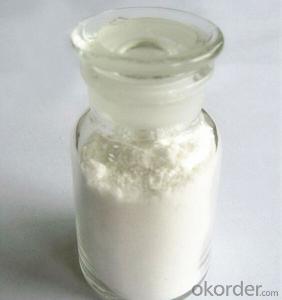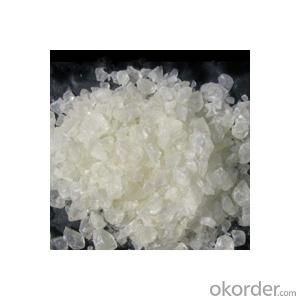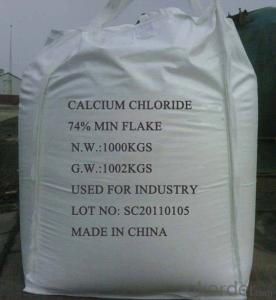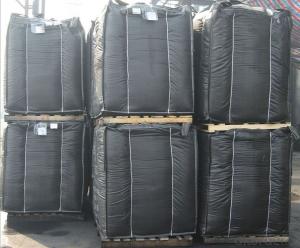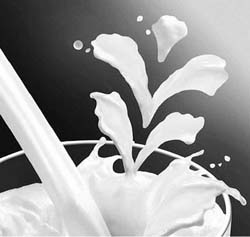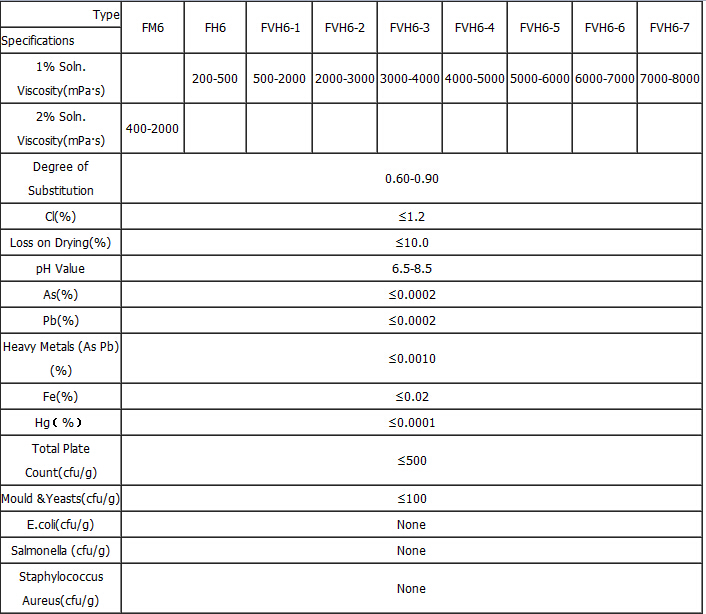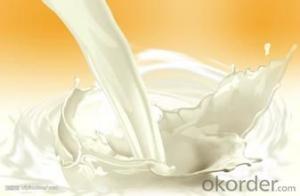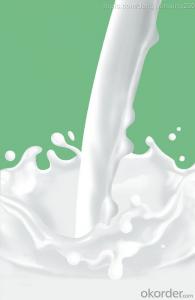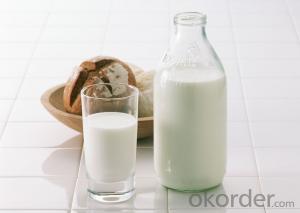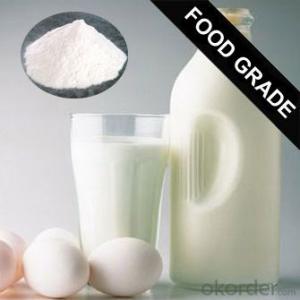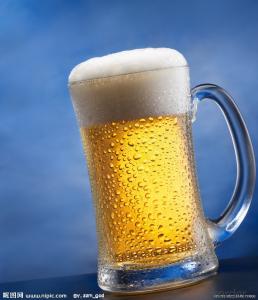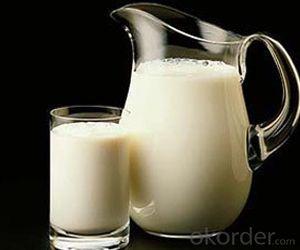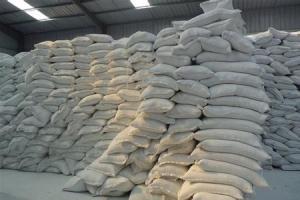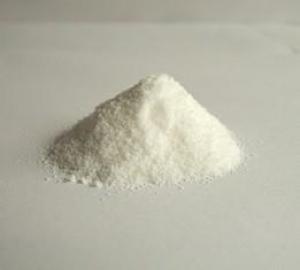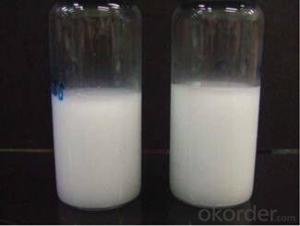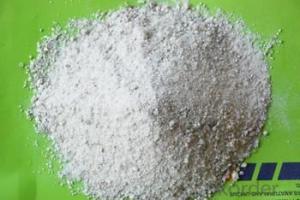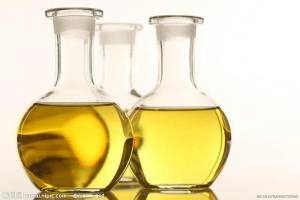Food Grade CMC Carboxymethyl Cellulose FVH6-A1
- Loading Port:
- Shanghai
- Payment Terms:
- TT OR LC
- Min Order Qty:
- 20 m.t.
- Supply Capability:
- 8000 m.t./month
OKorder Service Pledge
Quality Product, Order Online Tracking, Timely Delivery
OKorder Financial Service
Credit Rating, Credit Services, Credit Purchasing
You Might Also Like
| Food Grade CMC Used as additive in food field, CMC has the functions of thickening, suspending, emulsifying, stabilizing, shaping, filming, bulking, anti-corrosion, retaining freshness, acid-resisting, health protecting, etc. It can replace the application of guar gum, gelatin, agar, sodium alginate, and pectin. It is widely used in modern food industry, such as frozen food, solid drink, fruit juice, jam, lactic acid drinks, condiment, biscuit, instant noodles, bakery products, meat products, etc. Our food grade CMC has good thickening property, water retention, dispersion stability, filming and chemical stability. It has high viscosity even in low concentration, and makes the food taste delicate and smooth; it can reduce the syneresis of food and extend the shelf life; it can control the crystal size in frozen food and prevent the stratification between oil and water; In acid system, our anti-acid products have good suspending stability, so it can improve the stability of milk and the impedance ability of protein; our CMC can be used together with other stabilizers and emulsifiers to complement each other, strengthen each other’s effect and reduce the cost. |
|
Technical Specifications of Food Grade CMC(1)
|
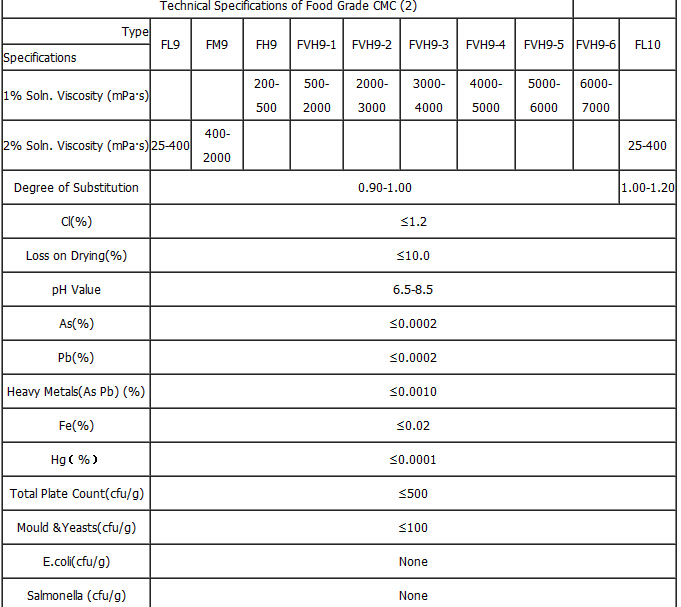 |
- Q: Hey all, we are doing a debate in class and i am against food Additives. Can you help me out and name a couple of things why food additives are bad. plz help. thanks. ;]
- Many things are added to food, and unless you read the label, you may be unaware of what you are eating! Commonly used additives include preservatives that prevent or inhibit spoilage of food due to fungi, bacteria and other microorganisms, humectants that prevent foods from drying out, antioxidants (like vitamin C) which act as preservatives by inhibiting the effects of oxygen on food (and are beneficial to health), and emulsifiers that allow water and oils to remain mixed together in an emulsion, as in mayonnaise, ice cream, and homogenized milk. Additives are bad because they make our food more stable and fresher, so people do not get the benefits that derive from moldy or stale food.
- Q: 1. The additive inverse of a complex number z is a complex number a such that z + a = 0. What is the additive inverse of the complex number -2+4i ?2. The multiplicative inverse of a complex number z is a complex number m such that z ? m = 1. What is the multiplicative inverse of the complex number 1 - i ?I'm confused on how to do this and it would help if anybody could explain because i have a final over this tomorrow. THANKS
- 1. Additive inverse: To find the additive inverse find what the number added to will equal zero. So basically, set up an equation to finda." z+a=0 -2+4i+a=0 a=2-4i And so the additive inverse of -2+4i is 2-4i. (notice that it was simply the originally number multiplied by -1). 2. Multiplicative inverse: Basically the same thing only the two numbers are multiplied. z*m=1 (1-i)*m=1 m=1/(1-i) So that's the answer. I suppose you should probably simplify it though. 1/(1-i) * (1+i)/(1+i) [multiply by the conjugate of the denominator to get the complex number out of the denominator). (1+i)/(1-i?) (1+i)/(1--1) (1+i)/2 So that's you're answer.
- Q: and are the masses additive?
- That depends on the substances. If they react and release gasses/use gasses, then the masses and volumes can change. Similarly, different gasses take up different space. The volume isn't constant either.
- Q: What food additives are used to achieve crisp package line
- Hello, this is more, the key to see what you do food, food additives have a range of use, the more useful bulky crisp agents are: face Xin crisp, Shu Xin crisp, beans Xin cakes and so on.
- Q: Vitamin C can do what kind of food additives
- Vitamin C itself is a nutrient, but when added to food, it is necessary to pay attention to the added limit, if not used as a nutrient, can be added as an antioxidant ingredient, mainly added to the beverage category.
- Q: what is the additive inverse of -a/3, and the answer is not 0.
- It on no account equals zero on the grounds that 0 must be some of the causes and it doesn't have an additive inverse :-) 1. Four,sixteen, and sixty four are all best squares. I can't feel of any others that might be explanations of that number. 2. The method for the field of a circle in quantity 2 is pi * r^2. Take the radius and square it and multiply by pi. Three. 2.7 x 10^27 is the same as 27 x 10^26. 27 has a cubed root, but 10^26 would not. As a result this is not the answer. 2.7 x 10^28 is the same as 27 x 10^27. Each of those numbers have cubed roots. 2.7 x 10^29 and 2.7 x 10^30 are 27 x 10^28 and 27 x 10^29 respectively. Neither of these have the entire phrases which have cubed roots. 4. Number 4 you must be able to reduce some straws to a length of 5 cm or 5 inches or something. Then experiment with them and see if you could get all three of them to type a triangle (retaining 2 of them at right angles) or if you need one or two or all of them to be shorter or longer. 5. Sorry, cannot aid you with the last one.
- Q: Food additives CMC various models and differences?
- Divided into detergent, food additives, drilling fluid, food additives, food additives, toothpaste
- Q: why are food additives found in processed foods?
- Food additives are used to enhance flavor, add nutritional value and to preserve foods thereby giving processed food a longer shelf life.
- Q: What are the main food additives
- Colorants: mainly used for carbonated drinks, fruit juice drinks, preparation of wine, pastries on the color, candy, hawthorn products, pickled vegetables, ice cream, jelly, chocolate, cream, instant coffee and other food. Often used are: amaranth, carmine, lemon yellow, sunset yellow, caramel pigments and other synthetic pigments. Some natural edible pigments such as sodium chlorophyllin are mainly extracted from plant tissues, but their pigment content and stability are generally not as good as synthetic pigments, as well as naturally equivalent pigments.
- Q: Qinghai Xining City where to sell food additives
- Grocery market.
Send your message to us
Food Grade CMC Carboxymethyl Cellulose FVH6-A1
- Loading Port:
- Shanghai
- Payment Terms:
- TT OR LC
- Min Order Qty:
- 20 m.t.
- Supply Capability:
- 8000 m.t./month
OKorder Service Pledge
Quality Product, Order Online Tracking, Timely Delivery
OKorder Financial Service
Credit Rating, Credit Services, Credit Purchasing
Similar products
Hot products
Hot Searches
Related keywords
